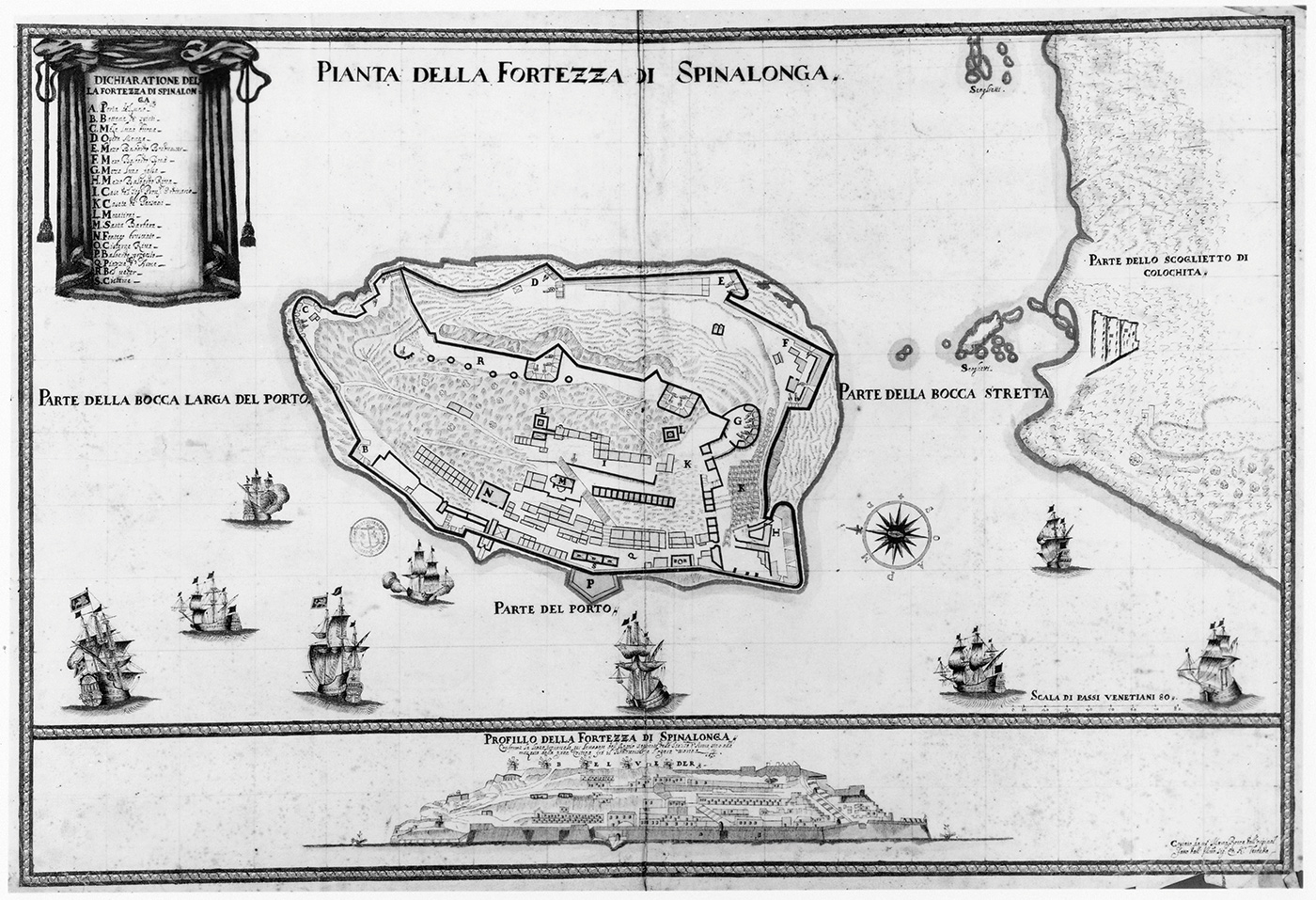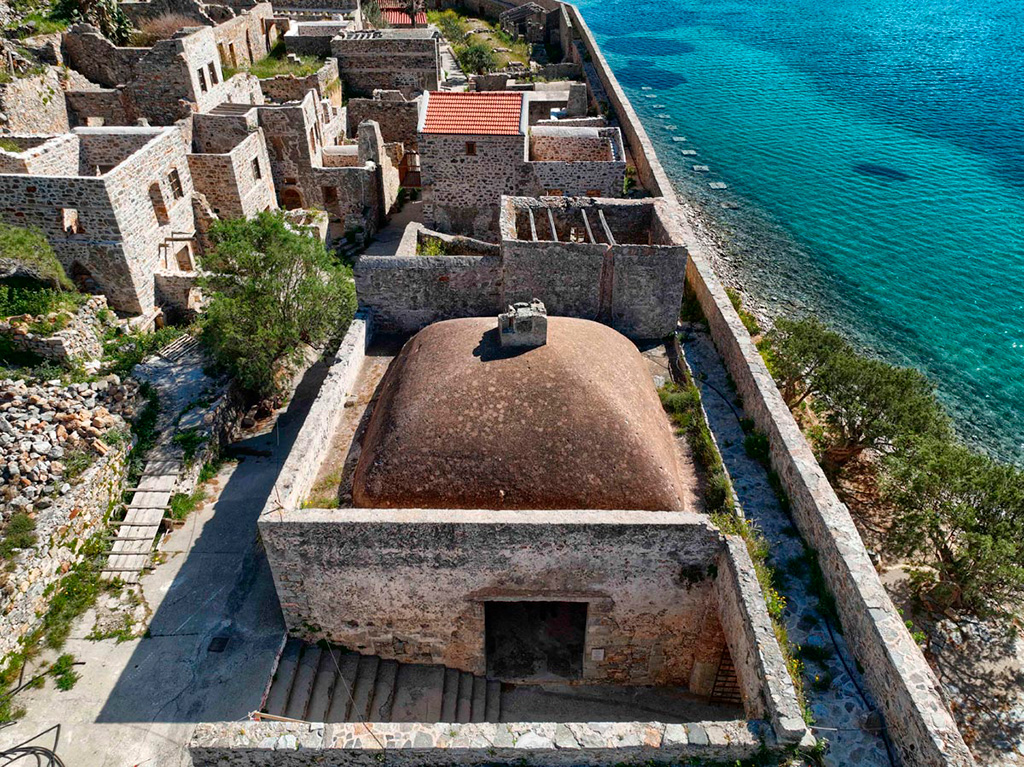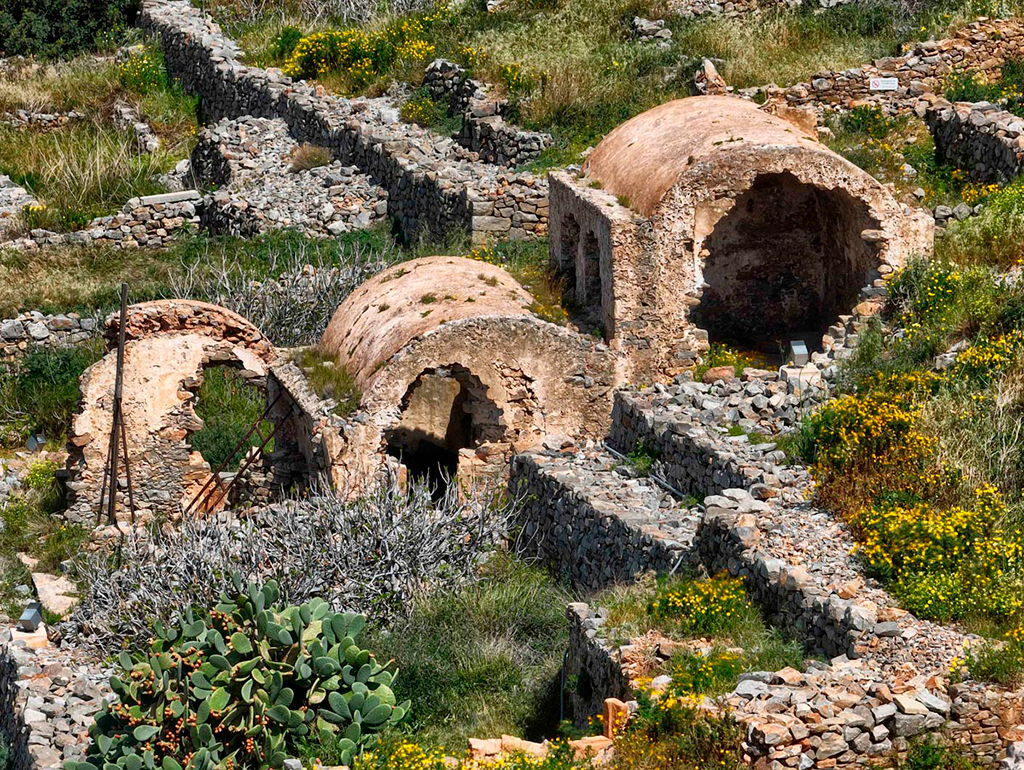The daily life in the venetian fortress
A special Provisioner governs the fortress with a two-year service, who, as a representative of the Most Serene Republic of Venice, is responsible for the implementation of fortification works, the effortless supply of the fortress, the financial management, and the administration of justice. The Commander with a five-year service is at the top of the military administration. In Spinalonga, there are other subordinate military officers, while under peace conditions, there are two troops of 300 men, reinforced in times of grave danger. The garrison includes a mosaic of nationalities, Italians, French, and Germans serving as mercenaries. Additionally, in Spinalonga, there is a Catholic priest, a barber, a practising physician, an administrator for supplies, Greek artisans who were utilised during the fortification period and remain to meet current needs, exiles and convicts, as well as local inhabitants, Christian fugitives and refugees, who find refuge in the fortress during the challenging period of the Cretan War (1645-1669).
The administration of the fortress follows the military hierarchy of the personnel serving in the fort. In the most privileged position on the island, in the middle of the western slope with a panoramic view of the harbour, are the residences of the officials (the residences of the Provisioner, the chief of the artillery and the administrator), while at a lower level are the accommodations of the soldiers and the residence of the Commander. The accommodations of the artillery operators are separate on the island's north side.
In addition to the residences of the officials and the garrison and the facilities with purely military character (gunpowder magazines and weapon storages, garrison chambers), the camp incorporates spaces that make the fortress self-sufficient in case of a prolonged siege. These include grain and supplies warehouse, a hospital, ovens, windmills, and numerous tanks to address the severe water scarcity issue. Noteworthy is also the presence of residences. The settlement of Christian refugees and migrants in Spinalonga from 1647 till 1715 (surrender of the fortress) changes its clear military character. Before the submission, the settlement has seven neighbourhoods, each one of which has a church as a reference point. During the period of the refugees' stay on the island, five new churches are rebuilt. Among them, only the churches of St. George (1661) and St. Panteleimon (1709) survive.
The men of the garrison have daily duties in their schedule, such as patrols, shifts on watchtowers, raising and lowering the flag of St. Mark, chores like drying wet gunpowder, and some emergency tasks like participating in the construction of fortifications. The Commander trains and inspects the garrison in the "Square of guns". After the completion of their duties, they do not have the opportunity to leave the fortress and work, as happens in city fortresses. Thus, they are forced to spend their free time on the island. Their daily routine is interrupted by major religious festivals and Sunday services, as well as the arrivals of new Provisioners and other officials, celebrated with cannon fire, parades, and inspection of the garrison.
The fortress of Spinalonga has a bad reputation due to the inhuman living conditions and the difficulties in its restocking. Most of the problems arise due to its isolation. Even in times of peace, the soldiers lack the necessary goods. Often, especially during periods of siege, the soldiers suffer from hunger, and the only thing they consume are rusks. Moreover, the salaries are often paid with significant delays while the officials struggle to obtain permission for repatriation. There are also difficulties with the accommodation of the garrison. The military camps are in low-grade condition and are not enough for all the soldiers.
Photo Gallery
The plan and western aspect of the fortress in a design by the French-born chief engineer Filippo Besseti di Verneda (1653), which includes abundant information about the fortifications and premises of the island. For example, under the Moceniga demi-lune [G], the villagers' houses are depicted [K], Casete de'Paesani according to the map's legend, while windmills are on the ridge. ©Bibliothèque Nationale, Paris
The garrison building. ©Ephorate of Antiquities of Lasithi
Aspect of tripartite building. ©Ephorate of Antiquities of Lasithi





